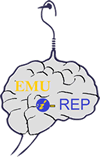JavaScript is disabled for your browser. Some features of this site may not work without it.
| dc.contributor.advisor | Rıza, Müge (Supervisor) | |
| dc.contributor.author | Talebian, Kasra | |
| dc.date.accessioned | 2024-10-08T05:17:10Z | |
| dc.date.available | 2024-10-08T05:17:10Z | |
| dc.date.issued | 2021-08 | |
| dc.date.submitted | 2021-08 | |
| dc.identifier.citation | Talebian, Kasra. (2021).Developing a Method for Analyzing and Documenting Impact of Lighting on Livability of Cities: Case of Mashhad, Iran (M.S.), Eastern Mediterranean University, Institute of Graduate Studies and Research, Dept. of Architecture, Famagusta: North Cyprus. | en_US |
| dc.identifier.uri | http://hdl.handle.net/11129/6158 | |
| dc.description | Doctor of Philosophy in Architecture. Institute of Graduate Studies and Research. Thesis (Ph.D.) - Eastern Mediterranean University, Faculty of Architecture, Dept. of Architecture, 2021. Supervisor: Asst. Prof. Dr. Müge Rıza. | en_US |
| dc.description.abstract | The night phase of cities has traditionally hosted extra events and activities in history. However, urban night in the 21st century seems to host additional happenings, new users, and a wide range of new activities. This study investigates 24/7 cities and cities of lights throughout history and the notion of light in Persian culture and specifically in the case of Mashhad, the second-largest city of Iran. The city was observed at four scales, from inside houses to the urban facades and urban spaces and beyond the boundaries of the city in the context of cultural geographies of the Islamic world. The study brings up the theory of urban lighting affecting cities' livability by defining the area of influence of lighting on quality of life and puts a step toward providing a systematical framework for analyzing urban lighting of cities through qualitative and quantitative measures. Potentials of Cellular Automata to be used as a basis for creating an automated night map of the city are also examined. Three key concepts were identified: population growth pushes activities and users into the night phase of cities; authorities play a significant role in the formation of 24-hour districts, and ideologies and local culture can support and provide safety for urban nightlife. In the case of Mashhad, ideology seems to have played a crucial role in the formation of urban nightlife. At the same time, the financial and social aspects of developments are originally subordinate to the ideology. | en_US |
| dc.description.abstract | ÖZ: Şehirlerin gece evresi geleneksel olarak tarihte ekstra etkinliklere ev sahipliği yaptmiştır. Bununla birlikte, 21. Yüzyılda gece aktivitelere daha fazla önem kazanmaya başladı, yeni kullanıcılar ve daha etkin gece kullanımı gözlemleye başlamıştır. Bu çalışma 24/7 kent konseptini ve bu bağlamda ‘ışık’ şehirlerini, özellikle Fars kültüründeki ‘ışık’ kavramını ve İran'ın ikinci büyük şehri Mashhad’ı örnek çalışma olarak araştırmaktadır. Mashhad kenti, İslam dünyasının kültürel coğrafyaları bağlamında evlerin içinden kentsel cephelere ve kentsel alanlara ve şehir sınırlarının ötesine kadar dört ölçekte gözlemlendi. Çalışma, aydınlatmanın yaşam kalitesi üzerindeki etki alanını tanımlayarak şehirlerin yaşanabilirliğini etkileyen kentsel aydınlatma teorisini gündeme getiriyor ve şehirlerin kentsel aydınlatmasını nitel ve nicel önlemlerle analiz etmek için sistematik bir çerçeve sağlamaya yönelik bir adım atıyor. Cellular automata uygulaması yardımı ile Masshad kentin gece haritasını oluşturulmuştur, ve bu bağlamda gece kullanım potansiyelleri incelenmiştir. Sonuç olarak üç temel sonuç gözlemlenmiştir : nüfus artışı gece faaliyetlerini arttırıyor ve kullanıcıları şehirlerin gece aşamasına itiyor; yetkililer 24 saat açık bölgelerin oluşumunda önemli bir rol oynar ve ideolojiler ve yerel kültür kentsel gece hayatını destekleyebilir ve güvenliği sağlayabilir. Mashhad örneğinde, ideoloji kentsel gece hayatının oluşumunda çok önemli bir rol oynamış gibi görünmektedir. Aynı zamanda, gelişmelerin finansal ve sosyal yönleri başlangıçta ideolojiye bağlı. | en_US |
| dc.language.iso | eng | en_US |
| dc.publisher | Eastern Mediterranean University (EMU) - Doğu Akdeniz Üniversitesi (DAÜ) | en_US |
| dc.rights | info:eu-repo/semantics/openAccess | en_US |
| dc.subject | Architecture Department | en_US |
| dc.subject | City and town life--Street Lighting--Urbap Lighting--Masshad (Iran) Street lighting--Social aspects Lighting, Architectural and decorative--Masshad (Iran) Lighting, Architectural Design Space (Architecture)--Social aspects--Lighting Sociology, Urban Urbanization--Streets--Lighting | en_US |
| dc.subject | Public space, urban lighting, urban night, culture of cities, city of lights, nightlife, nighttime economy | en_US |
| dc.title | Developing a Method for Analyzing and Documenting Impact of Lighting on Livability of Cities: Case of Mashhad, Iran | en_US |
| dc.type | doctoralThesis | en_US |
| dc.contributor.department | Eastern Mediterranean University, Faculty of Architecture, Dept. of Architecture | en_US |









